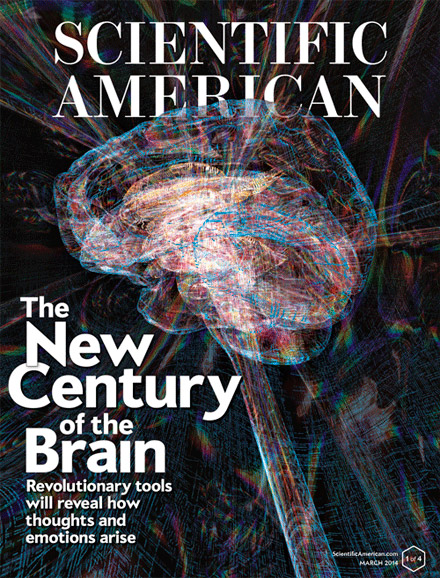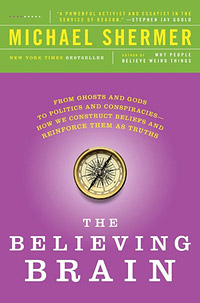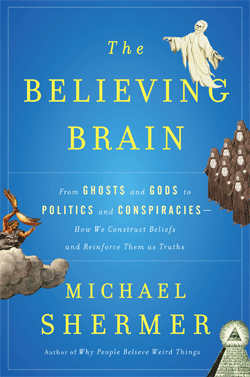The “Quantum Flapdoodle” of Deepak Chopra and his notion of the deity as a nonlocal quantum mind
Do you believe in God? In most surveys, about nine out of ten Americans respond in the affirmative. The other ten percent provide a variety of answers, including a favorite among skeptics and atheists, “which God?,” spoken in a smarmy manner and followed by a litany of deities: Aphrodite, Amon Ra, Apollo, Baal, Brahma, Ganesha, Isis, Mithras, Osiris, Shiva, Thor, Vishnu, Wotan, and Zeus. “We’re all atheists of these gods,” goes the denouement, “some of us go one god further.”
I have debated many a theologian who make the traditional arguments for God’s existence: the cosmological argument (prime mover, first cause), the teleological argument (the universe’s order and design), the ontological argument (if it is logically possible for God to exist then God exists), the anthropic argument (the fine-tuned characteristics of nature), the moral argument (awareness of right and wrong), and others. These are all reasons to believe if you already believe; if you do not already believe these reasons ring hollow and have been refuted by philosophers from David Hume to Daniel Dennett.
This last spring, however, I participated in a debate with a theologian of a different species—the New Age spiritualist Deepak Chopra—whose arguments for the existence of a deity take a radically different tact. Filmed by ABC’s Nightline and viewed by millions, Deepak hammered out a series of scientistic-sounding arguments for the existence of a nonlocal spooky-action-at-a-distance quantum force. Call it Deepak’s God 2.0.
In the Middle Ages scholars drew correspondences between the microcosm (the earth) and the macrocosm (the heavens), finding linkages between bodily organs, earthly minerals, and heavenly bodies that made the entire system interlocking and interdependent. Gold corresponds to the Sun, which corresponds to the Heart. Silver corresponds to the Moon, which corresponds to the Brain. Mercury corresponds to the planet Mercury, which corresponds to the Gonads. The four elements of Earth, Water, Air, and Fire were astrologically coupled to the four humor-based personality traits of melancholic, phlegmatic, sanguine, and choleric. In its essence Deepak’s New Age theology is a Middle Ages-inspired correspondence between macrocosm world events and microcosm quantum effects, an upgrade from God 1.0 to God 2.0, well captured in the following chart (inspired by my friend and colleague Stephen Beckner):
| God 1.0 |
God 2.0 |
omnipresent
fully man/fully God
miracles
leap of faith
transubstantiation
Council of Rome
supernatural forces
heaven
hell
eternity
prayer
the Godhead
the Trinity
forgiveness of sin
virgin birth
resurrection |
non-local
wave/particle duality
wave-function collapse
quantum leap
Heisenberg uncertainty principle
Copenhagen interpretation
anti-matter
dark energy
dark matter
space/time continuum
quantum entanglement
general relativity
special relativity
quantum erasure
quantum decoherence
virtual reality |
Deepak believes that the weirdness of the quantum world (such as Heisenberg’s uncertainty principle) can be linked to certain mysteries of the macro world (such as consciousness). This supposition is based on the work of the tandem team of Roger Penrose and Stuart Hameroff, whose theory of quantum consciousness has generated much heat but little light in scientific circles.
Inside our neurons are tiny hollow microtubules that act like structural scaffolding. The conjecture is that something inside the microtubules may initiate a wave function collapse that leads to the quantum coherence of atoms, causing neurotransmitters to be released into the synapses between neurons and thus triggering them to fire in a uniform pattern, thereby creating thought and consciousness. Since a wave function collapse can only come about when an atom is “observed” (i.e., affected in any way by something else), “mind” may be the observer in a recursive loop from atoms to molecules to neurons to thought to consciousness to mind to atoms to molecules to neurons to….
In reality, the gap between microcosm quantum effects and macrocosm world events is too large to bridge. In his 1995 book The Unconscious Quantum (Prometheus Books) the University of Colorado particle physicist Victor Stenger demonstrates that for a system to be described quantum mechanically the system’s typical mass m, speed v, and distance d must be on the order of Planck’s constant h. “If mvd is much greater than h, then the system probably can be treated classically.” Stenger computes that the mass of neural transmitter molecules, and their speed across the distance of the synapse, are about three orders of magnitude too large for quantum effects to be influential. There is no microcosm—macrocosm connection. Subatomic particles may be altered when they are observed, but contrary to what Deepak believes, the moon is there even if no one looks at it.
Deepak’s use and abuse of quantum physics is what the Caltech quantum physicist and Nobel laureate Murray Gell-Mann calls “quantum flapdoodle,” which is when you string together a series of terms and phrases from quantum physics and assume that explains something in the regular macro world in which we live. “The mind is like an electron cloud surrounding the nucleus of an atom,” Chopra writes in his 2006 book Life After Death. “Until an observer appears, electrons have no physical identity in the world; there is only the amorphous cloud. In the same way, imagine that there is a cloud of possibilities open to the brain at every moment (consisting of words, memories, ideas, and images I could choose from). When the mind gives a signal, one of these possibilities coalesces from the cloud and becomes a thought in the brain, just as an energy wave collapses into an electron.”
Baloney. The microscopic world of subatomic particles as described by the mathematics of quantum mechanics has no correspondence with the macroscopic world in which we live as described by the mathematics of Newtonian mechanics. These are two different physical systems at two different scales described by two different types of mathematics. The hydrogen atoms in the sun are not sitting around in a cloud of possibilities waiting for a cosmic mind to signal them to fuse into helium atoms and thereby throw off heat generated by nuclear fusion. By the laws of physics of this universe, a gravitationally collapsing cloud of hydrogen gas will, if large enough, reach a critical point of pressure to cause those hydrogen atoms to fuse into helium atoms and give off heat and light in the process, and it would do so even if there were not a single mind in the entire cosmos to observe it.
God 2.0 has no more basis in scientific fact than God 1.0, no matter how many observers believe it is so.




